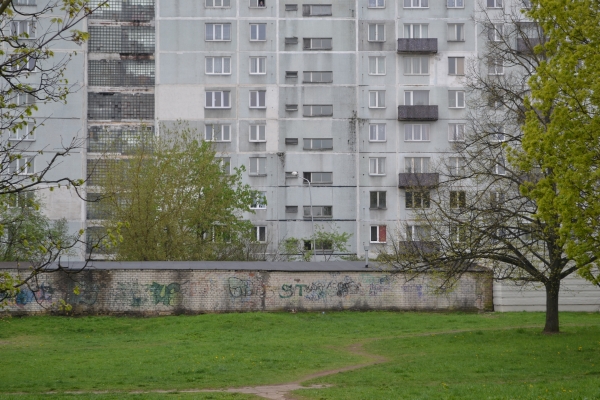Destiny of a Housing Estate 5
Careful Orientations in the 21st Century
Purvciems Housing Estate, Riga, Latvia, 1965–78
Text and photos: Melinda Benkő

The process of privatization in Latvia after the change of the political system resulted in returning agricultural lands formerly cultivated to the descendants of their pre-war owners. This in turn brought about a two-level system of ownership on the housing estates: one of them followed the grid system of the old plots on the ground level, whilst the other was divided up, in the Modernist prefab houses where tenants became the new owners themselves. Areas left free thus are not public domains any more as they are subdivided into either public or private zones independently of the Modernist development and shared utilization. The spectacular transformation of the physical environments of housing estates, including that of Purvciems, had begun before the country’s joining of the European Union in 2004 when the real estate development boom reached the capital city of Riga. Between 2002 and 2006, only 50 of the 1,700 lots wedged among housing estates were selected to build multi-unit modern tenement houses on to include a total of 1,000 new apartments. The outdated prefab buildings and their dwellers surround the new residential buildings which young people moved into and on the tiny lots around the housing estate detached family houses have been built for the well-to-do. The privatisation of areas still free and the development of the „inner courtyard” lots which have been built in totally independently of the existing urban lifestyles created a new reality, with the striking lack of spatial order.




